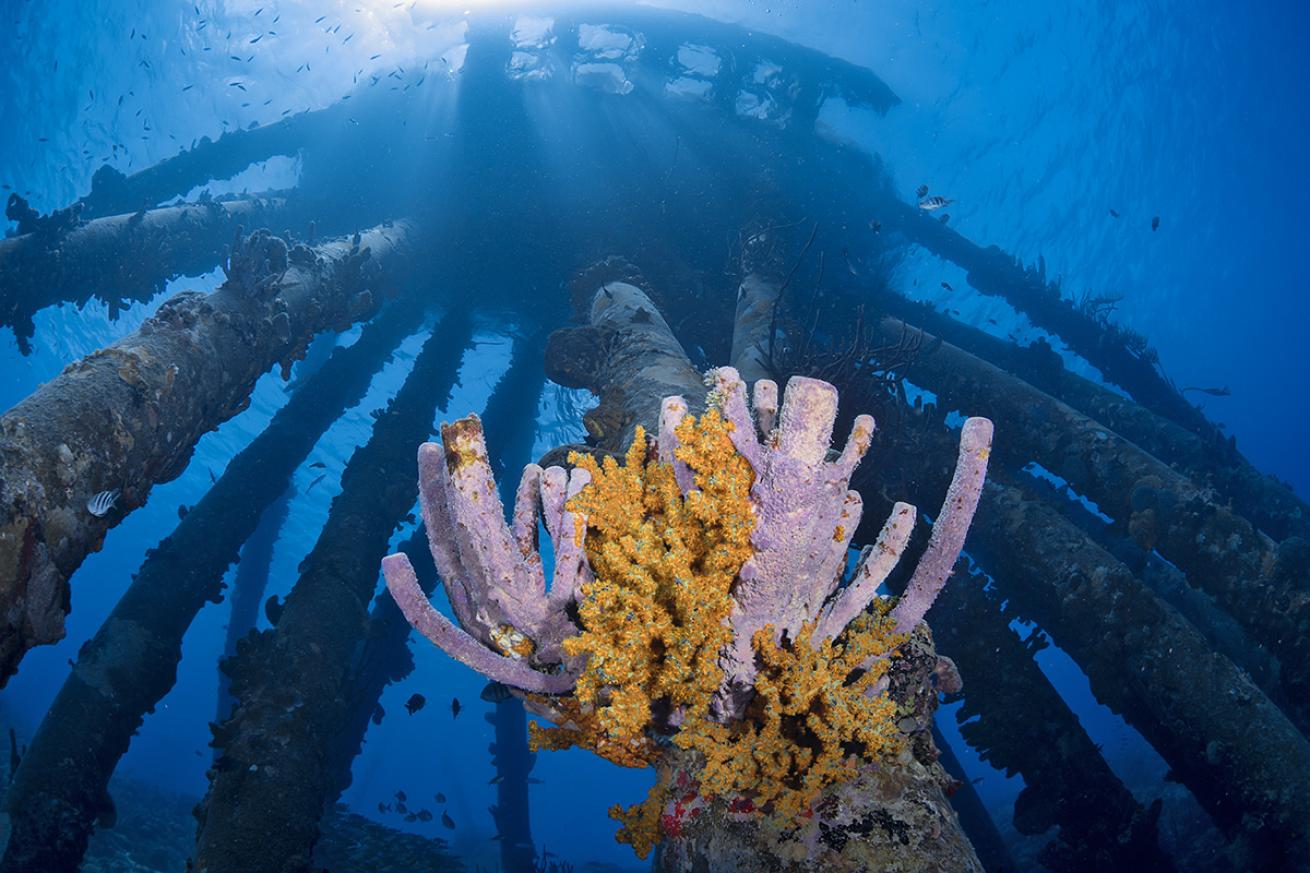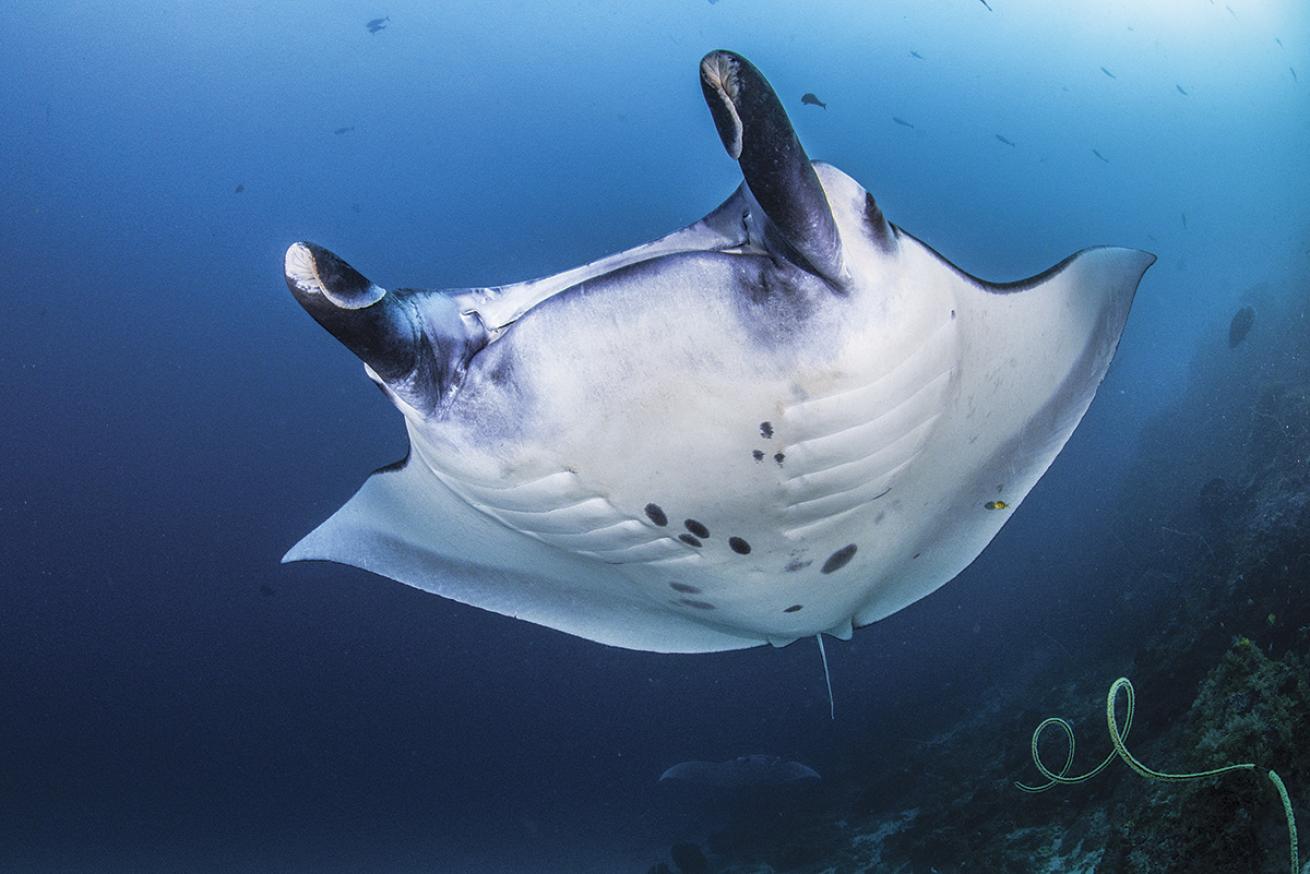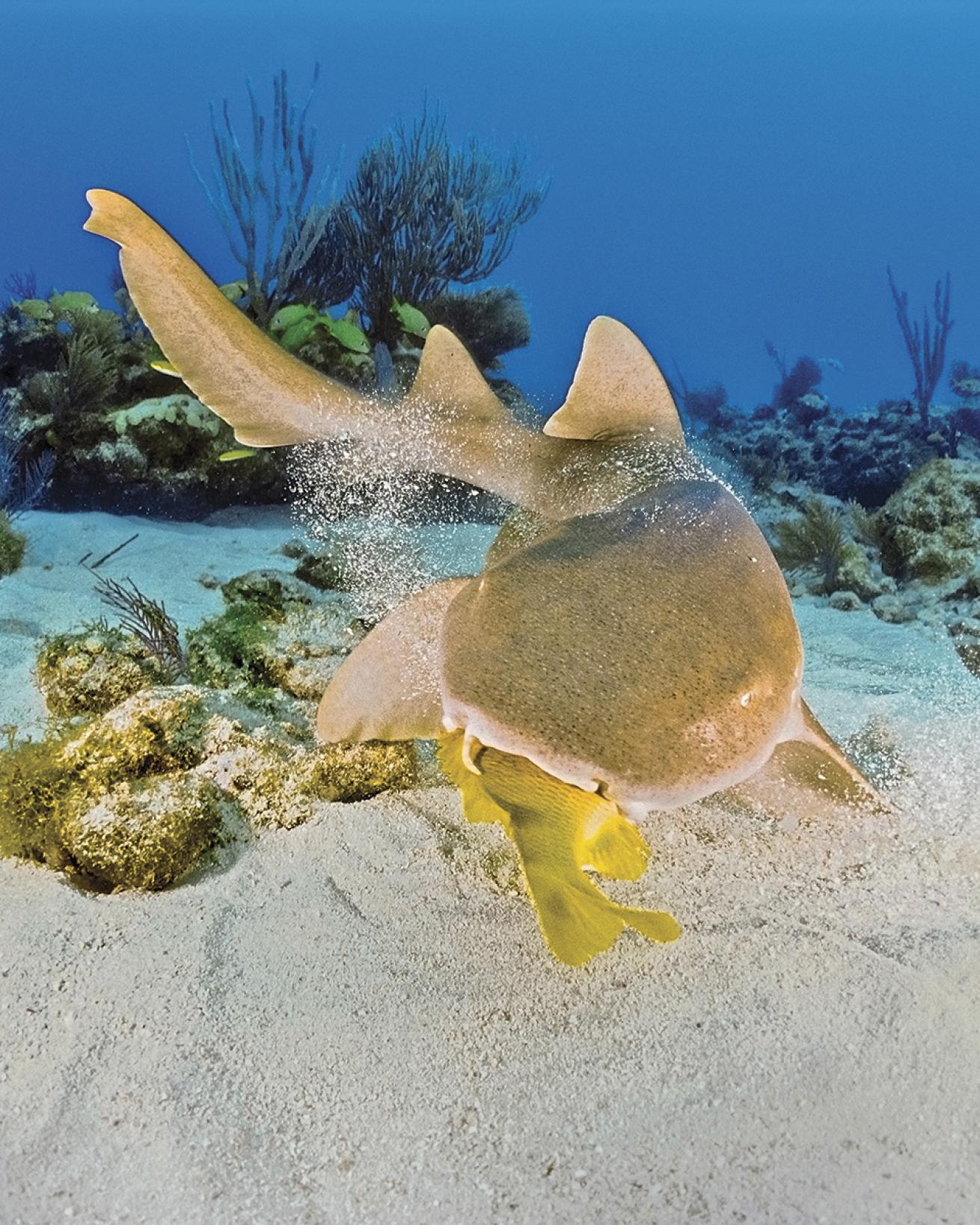Six Great Dive Destinations for Underwater Photography
Each year, we ask our readers to participate in our annual Readers Choice survey to determine the best dive destinations, resorts, operators and liveaboards. Nearly 5,000 readers provided feedback this year, which helped us to identify the value dive destinations below. View the complete 2020 Readers Choice Award rankings here.
1. Bonaire

Jennifer O'NeilBright, photogenic sponges are just a shore dive away at Bonaire’s Salt Pier.
Tote a camera on any dive, and you can nearly guarantee that your profile won’t match that of any of the other divers. Photographers often dive shallower for longer, proving the time constraints of most dive boats too limiting.
Bonaire changes the dynamics of diving by completely removing schedules. This tiny island offers more shore dives than anywhere else in the Caribbean, and allows underwater shooters to answer to no time constraints other than those of their dive computer.
“You make your own plan, and you go anytime you want—even night diving, anytime you want,” says David Rietveld, general manager of Delfins Beach Resort.
This means shooters can wait for ideal light conditions, just as it’s common for topside photographers to wait until clouds or weather align just so.
Moreover, the island is home to diverse underwater landscapes—which also means a diversity of underwater ecosystems, and accounts for Bonaire’s variety of fish life, unmatched by any other destination in the Caribbean.
READERS PICKS
Resorts
Buddy Dive Resort, Bonaire
Divi Resort, Bonaire
Operators
Buddy Dive, Bonaire
Divi Dive Bonaire
2. Cayman Islands
The Cayman Islands pack a lot of must-haves for underwater shooters—starting with pristine conditions nearly every day of the year. This destination is known for 100 feet of viz on most days.
Plus, its topography— sheer walls, grottoes, pinnacles, patch reefs—inspires creativity.
“Wide-angle photography is why I love Little Cayman,” says Neil van Niekerk, of Southern Cross Club resort on the island.
His favored shooting style takes advantage of the best this destination has to offer, starting with the water clarity, which allows for much more light distribution.
More light at greater depths helps colors pop. The walls on all the islands are gardens of sponges—orange elephant ears, purple vases and red ropes.
But it’s not just excellent lighting and color that make an image. Luckily, the walls and reefs see a parade of life, such as Caribbean reef sharks, eagle rays, tarpon and turtles.
The biggest highlight, van Niekerk says, is when “you are going for the holy grail of lining up the diver and the shark and the dive boat— along with the sun ball—all in the same shot.”
Of course, photographers best pack all their lenses on a trip to the Caymans.
At the site Mixing Bowl, for example, the sands yield yellowhead jawfish—spot the males with a mouth full of eggs—along with, depending on the season, other macro wonders like pipefish, pipehorses and seahorses.
READERS PICKS
Resorts
Cayman Brac Beach Resort, Cayman Islands
Cobalt Coast Dive Resort, Grand Cayman, Cayman Islands
Compass Point, Grand Cayman, Cayman Islands
Little Cayman Beach Resort, Cayman Islands
Sunset House, Grand Cayman, Cayman Islands
Operators
Brac Scuba Shack Divers, Cayman Brac, Cayman Islands
Divetech, Grand Cayman, Cayman Islands
Don Foster’s Dive Cayman, Grand Cayman, Cayman Islands
Ocean Frontiers, Grand Cayman, Cayman Islands
Red Sail Sports, Grand Cayman, Cayman Islands
Reef Divers, Cayman Brac, Cayman Islands
Reef Divers, Grand Cayman, Cayman Islands
Reef Divers, Little Cayman, Cayman Islands
Sunset Divers, Grand Cayman, Cayman Islands
Liveaboards
Cayman Aggressor V, Cayman Islands
3. Bahamas
When it comes to underwater subjects, the Bahamas delivers: shark on every dive, backdrops of healthy coral and a handful of well-preserved wrecks.
These islands are known for sharks, with dive outfitters such as Stuart Cove’s Dive Bahamas on Nassau and the International Underwater Explorer’s Society, aka UNEXSO, on the island of Grand Bahama, offering shark dives several times a week.
“But you don’t have to go on one of our shark dives to see a shark, because they’re all over the place,” says Linda Osborne, general manager of UNEXSO.
Not only do Caribbean reef sharks show up on most dives, but on occasion, lemons, bulls and even whale sharks have been seen on reef dives.
Moreover, most Bahamian islands offer a handful of wrecks. Grand Bahama has six, including the 228-foot Theo’s Wreck and, the island’s newest, Sini’s Wreck in 90 feet of water.
The diversity of subject matter, including wrecks, sharks and reefs, challenges any shooter to take their skills to the next level in a short period of time, all while building a portfolio of gorgeous imagery.
READERS PICKS
Resorts
Sandals Royal Bahamian, Nassau, Bahamas
Operators
Stuart Cove’s Dive Bahamas, New Providence
UNEXSO, Grand Bahama, Bahamas
Liveaboards
Aqua Cat, Bahamas
Bahamas Aggressor, Blackbeard’s Cruises, Bahamas
Cat Ppalu, Bahamas
4. Indonesia

Fabien Michenet / BiosphotoA manta ray steals the show in Indonesia’s Komodo region, a hub of biodiversity.
Indonesia holds the undefeated title as the underwater destination with the greatest biodiversity. Each region of Indonesia, including Alor Island, the Forgotten Islands and the Spice Islands, presents underwater photographers with a wealth of subject matter and unique ecosystems. From an evolutionary standpoint, islands are known for being havens of isolation, which fuels biodiversity. Add to that what British naturalist Alfred Russel Wallace recognized in 1859: The line separating Asia from Australia crosses through Indonesia, making it a merging grounds of species from two continental regions.
Of Indonesia’s more than 17,000 islands, Raja Ampat is known as the home of the greatest number of species. For underwater photographers, there is an almost limitless abundance of marine life to capture. A couple standouts of impossibly weird wonders are the gumball-size bobtail squid, with its iridescent coloring, and the alienlike bobbit worm.
But Raja Ampat isn’t the only place that wows. “From a recreational diver point of view, Komodo is more diverse—in one drift dive, you can see Pacific Ocean mantas and pinnacles,” says Luigi Russo, owner of the Arenui liveaboard, which sails to Komodo as well as a handful of other Indonesia destinations. “You really have a lot of possibilities in 40 by 60 nautical miles.”
For photographers, this means wide-angle action. It also means macro shootouts on many dives, including muck dives like Circus off Komodo Island and Fuzzy Bottom off Sumbawa Island.
All in all, every region in Indonesia can be the trip of a lifetime for any underwater photographer. The trick is choosing the one that checks your image bucket list.
READERS PICKS
Resorts
Wakatobi Dive Resort, Sulawesi, Indonesia
Operators
Wakatobi Dive Resort Dive Center, Sulawesi, Indonesia
Liveaboards
The Arenui, Indonesia
Dewi Nusantara, Indonesia
Pelagian, Sulawesi, Indonesia
5. The Florida Keys

Masa UshiodaA nurse shark lunches on a reef fish off Key Largo in the Florida Keys National Marine Sanctuary.
With 2,900 square nautical miles of protected reef, the Florida Keys National Marine Sanctuary, extending from Miami to the Dry Tortugas at the bottom of the Keys, offers photographers sprawling reefs and big animals, all without international travel for U.S. residents.
In the preserve, the marine life doesn’t seem to be affected by divers. “Our divers get great shots of a huge grouper that loves to hang out under the boat and isn’t scared of them being there,” says Valeria Reyes Ponce, of Captain Hook’s Strike Zone Charters.
Other commonly seen marine life includes nurse sharks, loggerhead turtles, spotted eagle rays and schools of yellowtail snapper numbering in the thousands.
READERS PICKS
Operators
Dive Key West, Florida Keys Horizon Divers, Key Largo, Florida Keys
Ocean Divers, Key Largo, Florida Keys
Rainbow Reef, Key Largo, Florida Keys
6. Solomon Islands
Thanks to the wealth of marine life in this South Pacific nation east of Papua New Guinea, the only downside for photographers might be the bag fees—because they won’t want to leave any gear at home.
Not only are the more than 900 islands known for some of the world’s most pristine reefs, this archipelago is also home to 30-plus World War II wrecks, many found off the island of Guadalcanal.
You’ll also be shooting wide-angle to capture lava-formed caves and canyons, and the giant mantas that regularly turn up at sites such as Devil’s Highway.
Then dial in for small as guides show you pygmy seahorses, ghost pipefish and a legion of other weird and woolly critters residing on the reefs, rubble and muck environments of this far-off, seemingly too-good-to-be-true bio hotspot.










